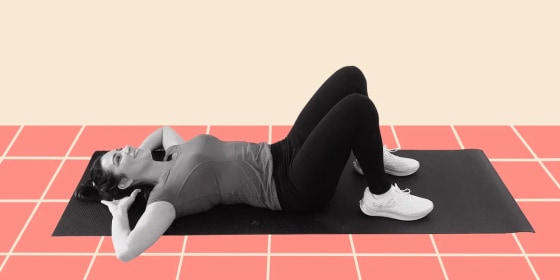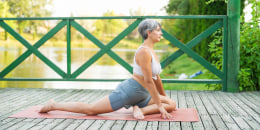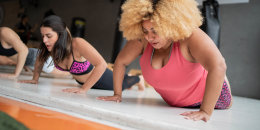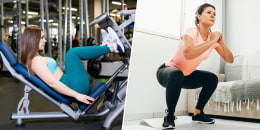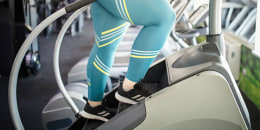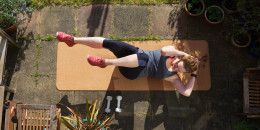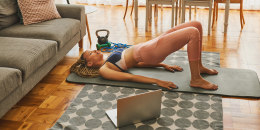Our core muscles are essential to everyday movement; we need them to walk, sit, and to lift and carry things.
Crunches are the first thing that comes to mind when people think about core strengthening, since they are a part of most sports training and workouts, from boxing to HIIT-style bootcamp to Pilates. However, doing crunches with bad form may do more harm than good — and people often perform them incorrectly.
If you don’t do them right, you will likely feel tension in your neck, so be sure to use proper form to prevent injury and to get the best workout.
Benefits of crunches
Our core is made up of four muscle groups, and crunches target just one of those groups, so use crunches as part of a well-rounded core routine that works all abdominal muscles.
But if you’re looking to tone your ab muscles, crunches are the perfect move to master. They cause hypertrophy, or growth in muscle size, of the rectus abdominis muscle.
Further, crunches can strengthen overall core muscle function, and this can promote better posture, balance and stabilization in other exercises and sports you perform.
Crunches vs. situps
When I’m asked if crunches or situps are better, I recommend people start with a crunch and work up to a situp.
A situp works more of the core than a crunch, but it’s harder to do a situp correctly.
It’s important to know how to perform a crunch without any neck pain first. After you build your core strength, you can move on to a modified situp and then a situp, which is a more advanced exercise that people often do incorrectly as well. Many people overuse the low back or shoulders because they’re using momentum to sit up.
How many crunches should I do a day?
As a personal trainer, I recommend creating your own workout routine, then increasing your core work incrementally. Try a core workout that includes three different ab exercises, like crunches, bicycle crunches and lower leg lifts.
You would do 10 crunches, 10 bicycle crunches, and then 10 lower lifts. Repeat that two more times for a total of three rounds and 30 exercises of each!
The common mistake people make when doing crunches
Before I studied physiology, personal training and Pilates, I did crunches wrong too. Most people pull their necks forward with their hands while crunching and the added pressure on the neck strains the muscles and causes pain. It’s key to engage your abdominals when you perform a crunch.
Here’s how to correct this common mistake:
- Pull your navel in toward your spine and squeeze your abs, making sure your low back maintains contact with the ground.
- Rest your fingertips gently behind your head, and be sure to keep your elbows wide pointed out toward the sides of the room (versus pulling forward toward your knees).
How to protect your back and neck when doing crunches
When you’re doing a crunch, you want to make sure that your head and neck are properly supported.
Here's how to keep your neck and back safe during crunches:
- Place your hands behind your head and open your elbows out to the sides.
- Lift your head and neck up off of the ground while supporting your head with your hands.
- Allow your head to rest heavy in your hands. This maintains proper spinal alignment.
- Relax your shoulders even though you are using your arms to hold your hands underneath your head.
- Try not to hunch your shoulders.
- Pretend that you’re holding an egg between your chin and your chest, and you don’t want to crack it. Make sure your chin isn’t tilting down too far toward your chest or pointing up to high towards the ceiling. Hold that egg! This helps you to maintain proper alignment and also ensures your neck is not over engaged during the crunch.
How to do a modified crunch
If you’re unsure how to perform a crunch without straining your neck, try the modified version to work your core as you gain the confidence to tackle the full move.
- Lie down with your back on the floor.
- Bend your knees and place your feet flat on the mat.
- Place your hands behind your head with your elbows wide.
- From this position, lift your chest up only halfway.
- Make sure to keep your knees bent and your shoulder blades off the ground as you tighten your abdominals.
- Lower back to the ground. Repeat 10 times.
How to do crunches
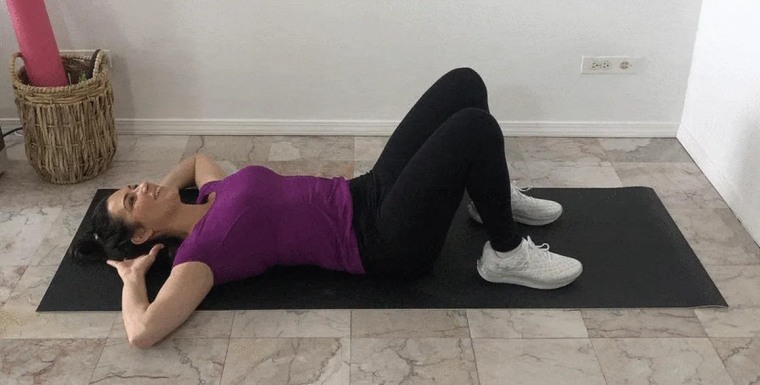
Performing a crunch effectively takes some practice. If you’re feeling confident, follow these step-by-step instructions to complete the crunch with perfect form:
- Lie down on your back with your knees bent, feet as wide as your hips and feet flat on the floor.
- Tighten your abs, pulling your belly button in toward your spine and making sure to engage your core throughout the exercise.
- With your hands placed gently behind your head and elbows wide, use your abs to bring your shoulder blades off the floor. Exhale as you lift your body.
- Slowly release the position, inhaling as your rest your head on the mat.
- Return to the starting position and repeat.
4 ways to do crunches
If you’re still feeling it in your neck, these exercises will help you build the strength needed to tackle a full crunch.
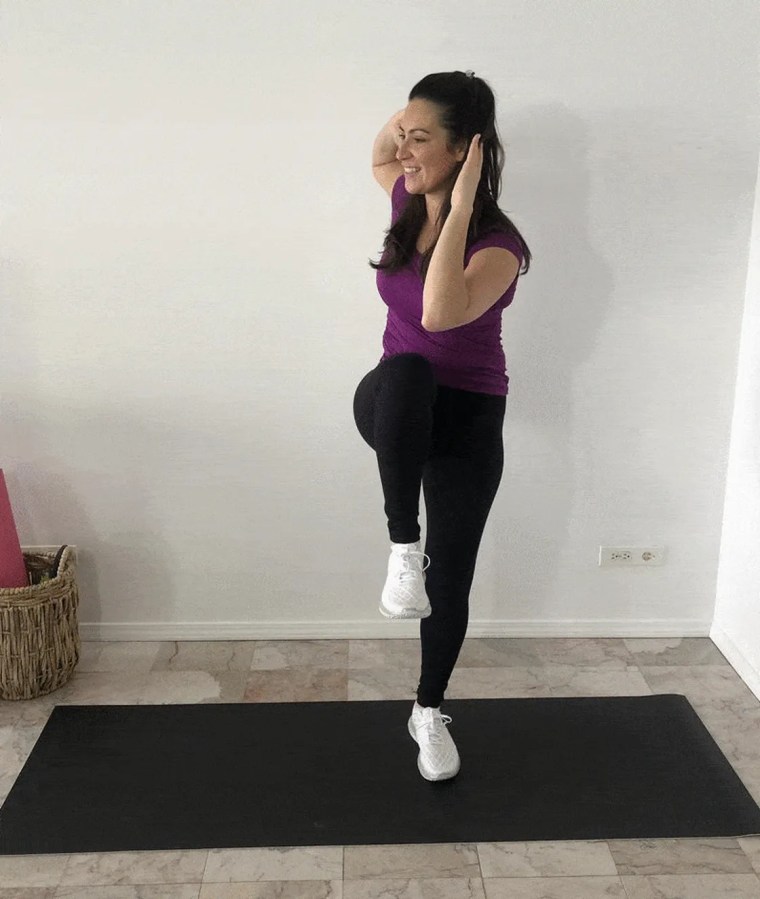
Standing bicycle crunches
This is the perfect move for beginners who want to practice engaging their core. Stand up straight with your hands behind your head. Lift your right knee up to your chest as you bring your left elbow down to meet the right knee. Then bring the left knee up and crunch the right elbow down to meet it. Continue alternating sides. Don’t forget to squeeze your abs!
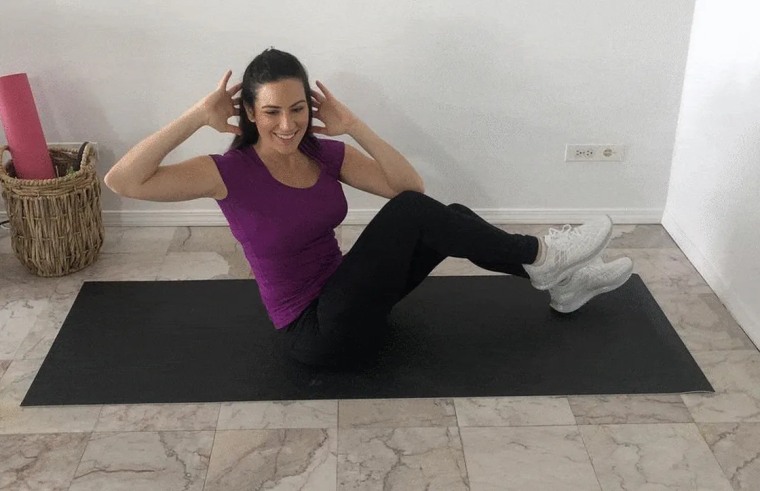
Modified bicycle crunch
Sit on your butt with your legs bent and heels resting on the ground. Position yourself as if you had just pulled yourself up into the top of a sit-up. Place your hands behind your head with your elbows wide. Twist your torso to the right and bring your right knee to meet your left elbow, then twist your torso to the left and bring your left knee to your right elbow.
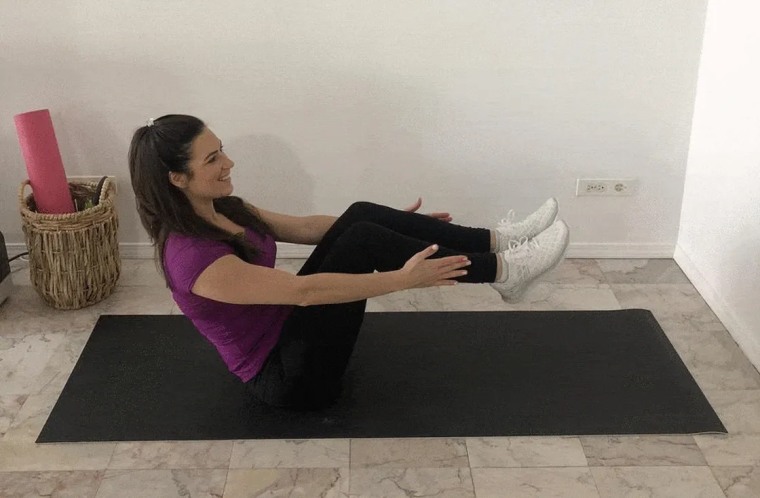
Boat
Sit down with your knees bent and feet flat on the ground. Lean back slightly, engaging the core and keeping the back straight. Hold your arms out straight in front of you as you lift your feet off the floor. Make sure to keep your legs together as you point your toes toward the ceiling and form a "V" with your body. Hold for 10 seconds. For a modification, keep the knees bent and open as wide as your hips, with shins parallel to the floor.
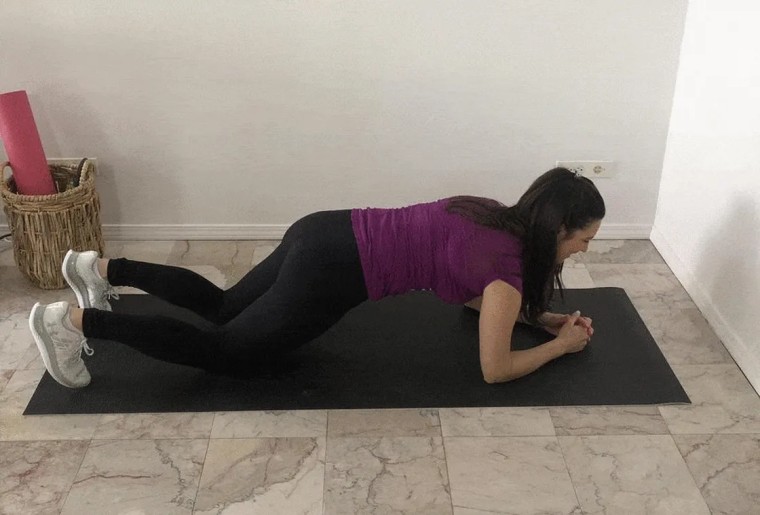
Modified forearm plank hold
Lie down on your stomach. Place your forearms flat on the mat and bend your knees so that they’re touching the mat. Engage your core and lift your body off the mat, balancing on your knees and forearms. You can stay here, or from this position, raise your knees off the mat so that you are one straight line from your head to your feet. Hold for 10 seconds, then return your knees to the mat. Repeat 10 times.
